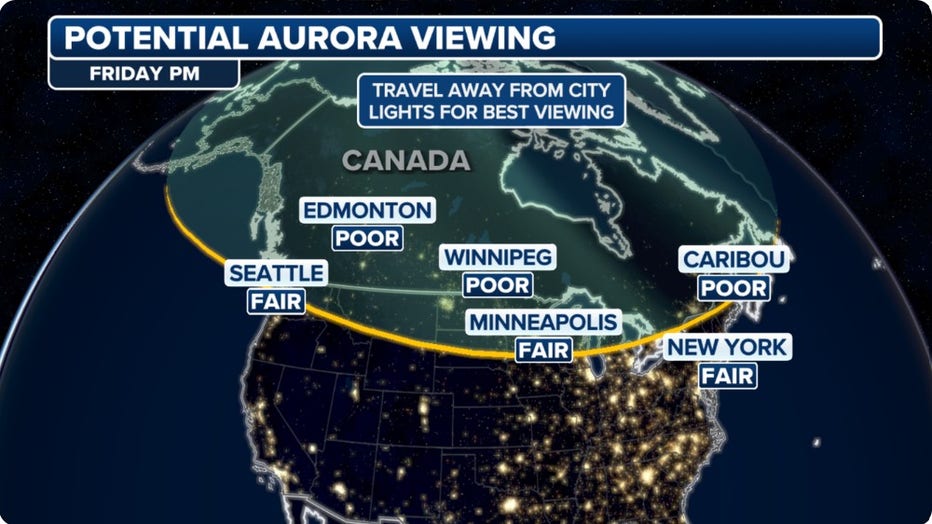Solar flares directed at Earth through Election Day create geomagnetic storm potential

Active sunspot regions seen on the Sun on Nov. 5, 2024 by NASA's SDO satellite. (NASA)
After reaching solar maximum in Solar Cycle 25, the Sun continues producing multiple solar flares, with some Earth-directed components. Thankfully, those will arrive after Election Day.
NOAA’s Space Weather Prediction Center issued a G1 Geomagnetic Storm Watch for Thursday. Geomagnetic storming of this magnitude is common.
The SWPC rates solar storms on a five-level scale, with five being the most extreme and rarest space weather conditions. Minor, Level 1 out of 5, geomagnetic storming is possible on Thursday.
On NOAA’s 5-level scale, it's Level 1. However, several sunspot regions on the Sun are likely to continue blasting out solar flares with possible Earth-directed components.
BACK-TO-BACK TAURID METEOR SHOWERS TO LIGHT UP NIGHT SKY IN NOVEMBER

FILE-The aurora borealis fills the sky with pink and blue waves of color over a farmhouse in Mercer, Maine on May 11, 2024. (Photo by Michael Seamans/Getty Images)
SWPC said solar flare activity is likely to remain elevated through Wednesday. If a coronal mass ejection (CME) associated with a flare heads toward Earth, it can take a few days for those impacts to arrive.
When the Sun emits solar flares, solar phenomena known as coronal mass ejections send charged particles toward Earth. When these particles interact with Earth’s magnetic field, we can see displays of Northern Lights, known as the Aurora Borealis. During minor and moderate geomagnetic storms, the Northern Lights can be visible at higher latitudes and in the U.S. in places such as Maine and northern Michigan.
Another aspect of space weather is the impact it can have on critical systems we use every day on Earth, including the power grid, communication and GPS navigation.
The SWPC also rates radio blackouts and solar radiation storms on a 5-level scale. This week's solar flares are likely to produce only Level 1 and 2 impacts, which could cause limited blackouts of high-frequency radio communication and the loss of radio contact for minutes. GPS navigation could also temporarily be degraded.
SEE MORE: EXTREME GEOMAGNETIC STORM TRIGGERS JAW-DROPPING AURORAS AROUND THE WORLD
The latest Geomagnetic Storm Watch comes after NOAA and NASA revealed the Sun reached solar maximum, a period of peak sunspot activity in its 11-year cycle. However, space weather experts said peak activity is expected to continue into 2025.

